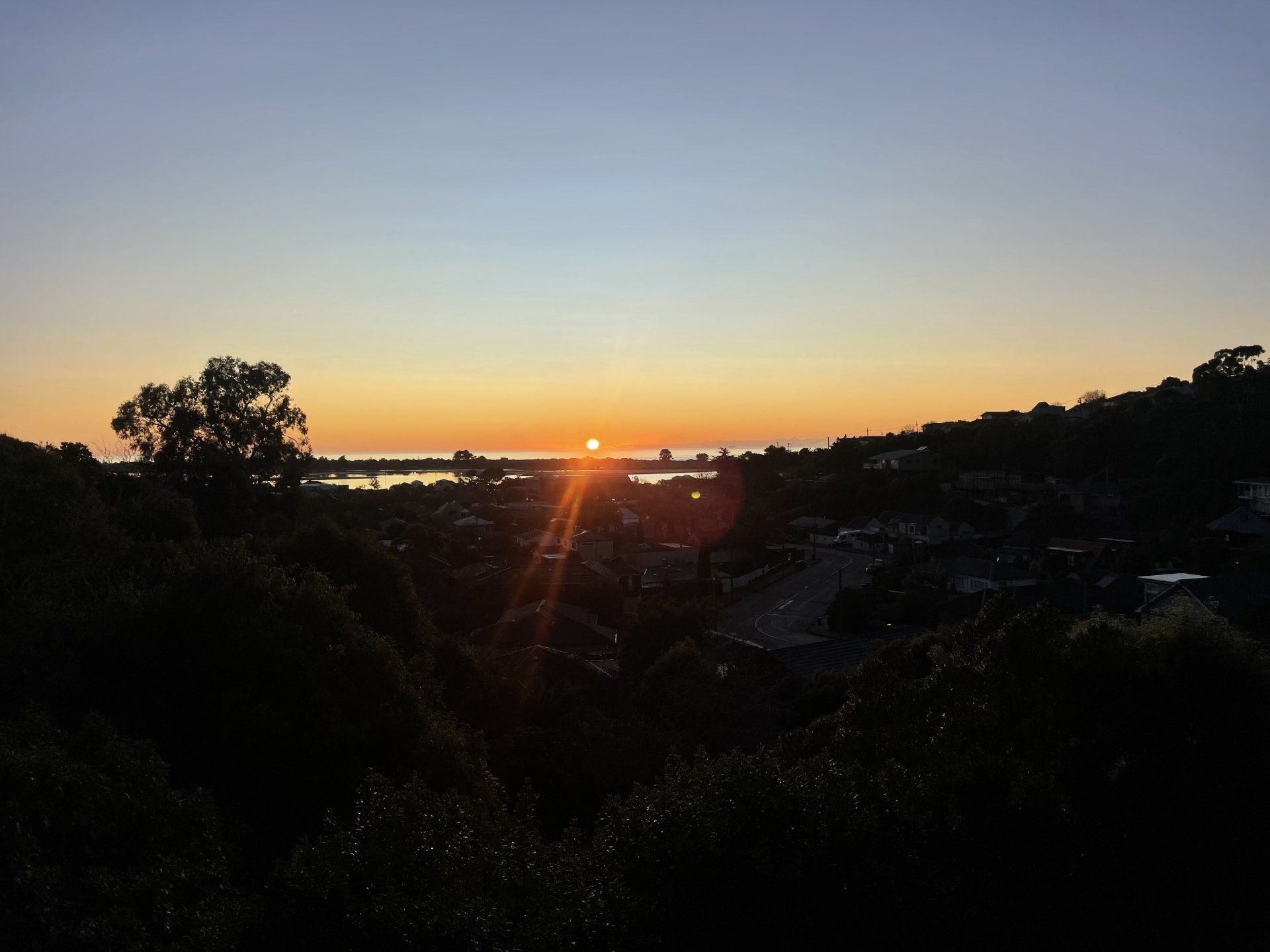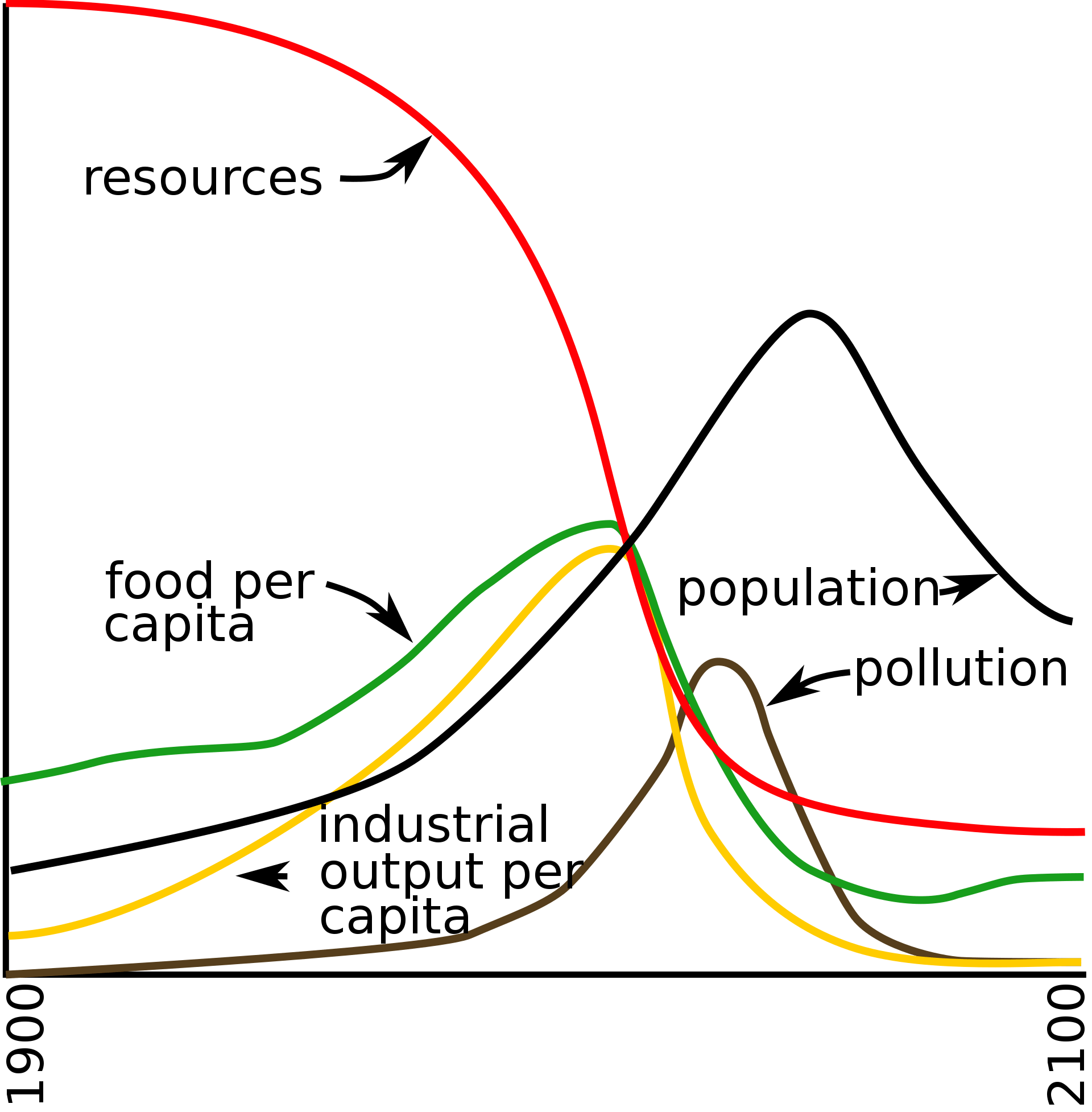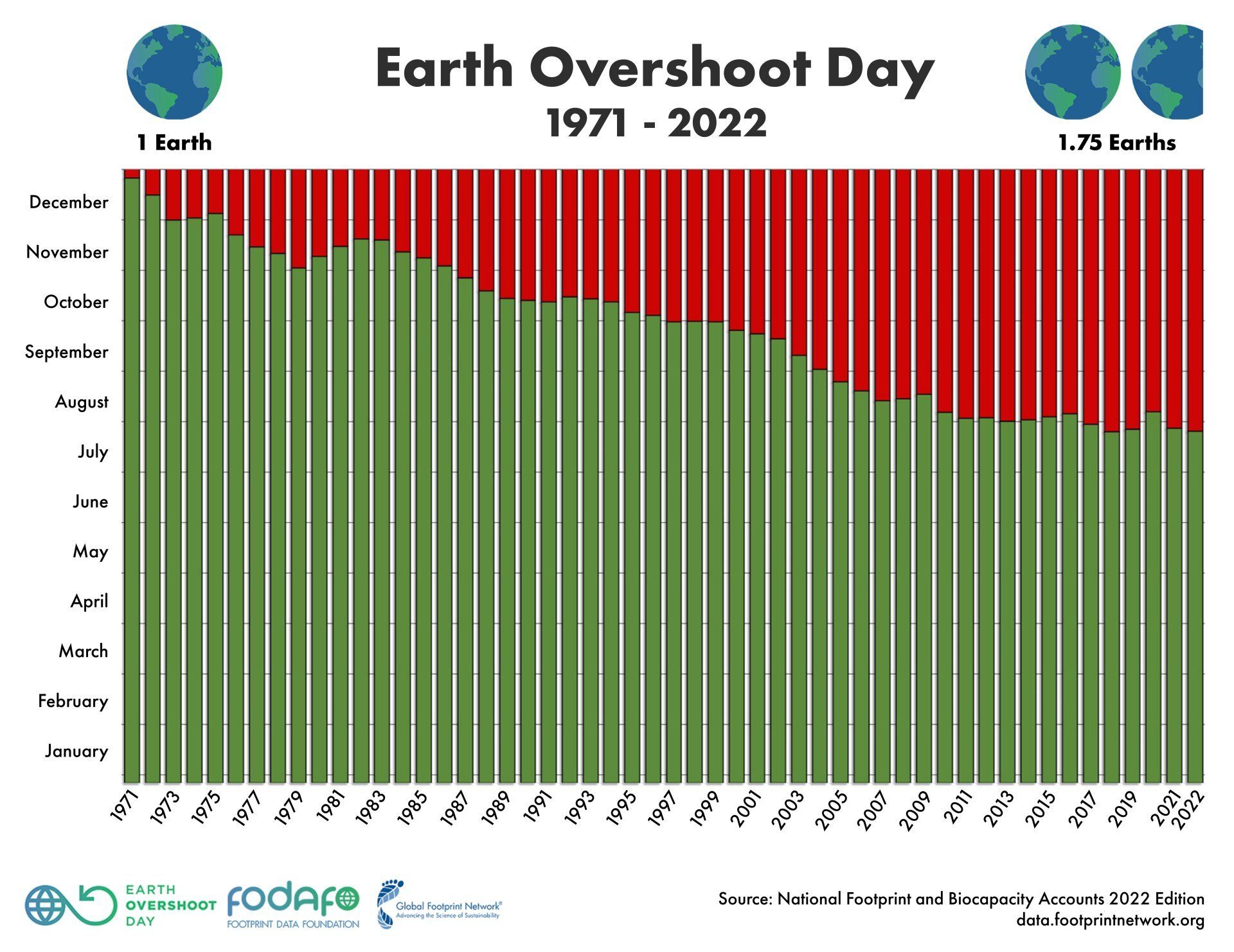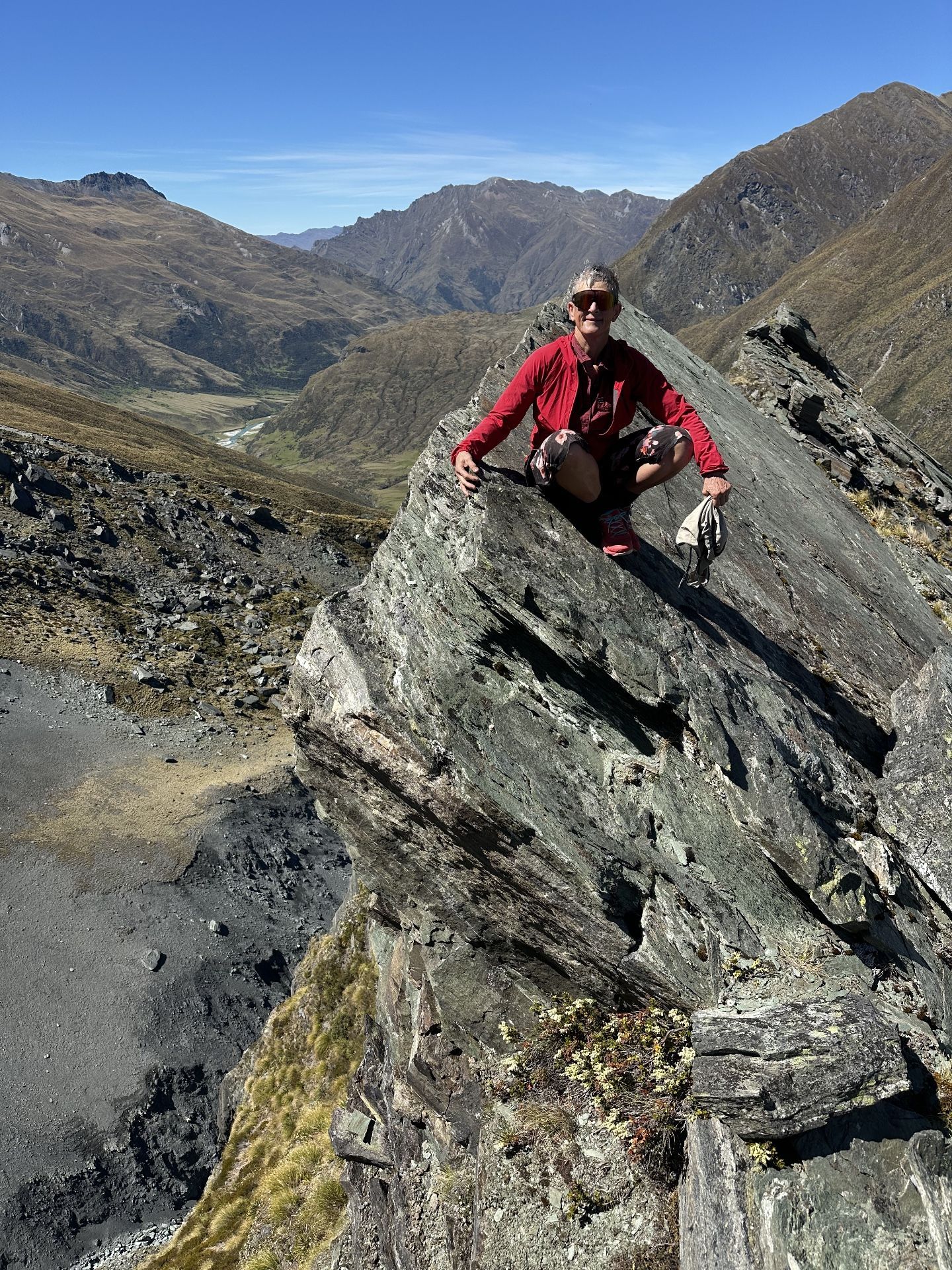Limits to Growth
…have we hit them?

Fifty years ago the report ‘Limits to Growth’ was produced discussing the possibility of exponential economic and population growth combined with finite supply of resources, as studied by computer simulation. The report was commissioned from MIT by the Club of Rome (a group created in 1968 to address crises facing humanity and the planet). One of the three goals of the project was to warn of the likely outcome of economic and industrial policies, with a view to influencing changes towards a sustainable life-style.
MIT’s World3 computer model was used as the basis of the report and was based on five variables – population, food production, industrialisation, pollution and consumption of nonrenewable natural resources. In 1972, all of these were increasing and were assumed to continue to grow exponentially while the ability of technology to increase resources was assumed to grow linearly. The model is based on the thesis, which has always seemed self-evident to me, that continued growth leads to infinite quantities that just do not fit into a finite world.
The model assumes four possible scenarios for a growing population in a limited environment. The population:
- Grows smoothly until it reaches carrying capacity and then levels out.
- Overshoots carrying capacity then reduces smoothly .
- Overshoots then oscillates around carrying capacity.
- Overshoots carrying capacity and overconsumes non-renewable resources and/or damages the systems upon which it is dependent, such that carrying capacity is permanently reduced.

Three runs of the World3 model were done, two of which predicted collapse of industrialised society in the 21st century. Collapse was predicted in ‘Business As Usual’ , where humans continued on with the growth model, as in the picture below. Business As Usual is indeed what we have done, with no major policy interventions away from a growth model – increased Gross Domestic Product remains the primary measurement of success for a nation’s economy across the globe.

There have been many criticisms of Limits to Growth. The strongest criticisms were that technological improvements would indeed ‘save’ us and this potential was not properly considered. We would be able to produce more, e.g. food, with less resource. However, improved efficiency of production has often led to increased demand; i,e. technology tends to bolster our consumptive desires. There is no evidence in the data that technology can or will allow us to escape resource constraints forever.
In fact, technology apparently hasn’t changed our track much since 1972. The Limits to Growth models have been looked at over time, in the light of the data gathered as the decades have progressed. A 2014 report found that the earth continues to track relatively closely to the Business As Usual scenario as shown below.

A critical aspect of the projections highlighted in that 2014 report and another in 2022 , is that the major concern is not whether we completely run out of a resource e.g. oil or water or phosphorus, but the amount of energy required to access that resource becomes ever greater. Energy itself is a limited resource and our dominant forms of energy still create carbon gases, which are another limiting factor in the model – pollution. Carbon gas pollution will create a scenario D, in which the carrying capacity of the planet is impaired, so maximum human population will, perforce, be lower.
It seems to me that we are not only hitting limits at the big picture, we are seeing limits hit at every scale in the picture. Need urgent medical attention? You will have a long wait at the emergency department. Need an operation? You will have a long wait to see a doctor and a further wait for the intervention, unless you are close to dying when you are seen. Need your road, or your local walking track repaired following a flood, or a major wind event? Get in the queue for infrastructure repairs. Don’t live in Wellington where it is predicted there will not be sufficient water supply this summer because the three waters infrastructure is so impaired. Water to drink some rainwater? Every water body on the planet is contaminated with plastic. The media are full of ‘not good enough’ stories.
While it appears we already cannot maintain the infrastructure that we have, we use finite resources to build even more infrastructure we can’t service into the future. In Christchurch, continued flood events are damaging ever more of the city and sea level will make swathes of the city uninhabitable. However, we are still going to build a new $600m stadium that will be occupied for a tiny fraction of its life and will cost the ratepayers $45m a year ongoing, to support businesses to offer events that ratepayers can then pay more to attend. Huh?
Have we already reached the point of ‘enough’ and beyond, so ‘not good enough’ is the future we have to live with? There is little doubt that, for the whole world to live like the western world, we need multiple planets of resources and, despite Elon Musk’s best efforts, one planet is all we have. This year, we hit Earth Overshoot Day – the day on which humans consumed more resources than we can produce in a year – in late July.

To me every piece of evidence out there says we have to learn to live with less i.e. ‘degrowth’. ‘Degrowth’ appears to be the only possible path forward where we avoid catastrophic scenarios and make the best of the inevitable decline. The Club of Rome were saying this 50 years ago, without impact. In 1972 we had some time to change but time is now as scarce as baristas in tourist towns. Critically, we need leadership promoting degrowth, which is conspicuously absent. I wrote to Eugenie Sage of the Green Party asking about the Green Party’s position on growth/degrowth. Her response? “The Green Party is not about growth at any cost.” We desperately need a political party that is not about growth at all, because we plain can’t afford it (interestingly, I found a ‘ Degrowth Greens ‘ group on the Green Party website, funny she didn’t mention it). Where might we find politicians with sufficient bravery to promote degrowth?
If I was to proffer any stab at a solution it would lie somewhere in community combined with bravery. Groups of people jointly agreeing to make do with less and inspiring each other to achieve those goals. Families teaching their children that sustainability is a goal that must come before wealth. That consumption should never be a goal in and of itself. That there are some (many?) jobs that one should simply neither aspire to nor take, because the goals of the employer are antithetical to continued human life on the planet. That our first questions when living, working or investing should be, does this activity lead to managed degrowth? As a very first step, let’s inject the word constantly into our conversations because, until we believe in a concept, it can never become a reality.






